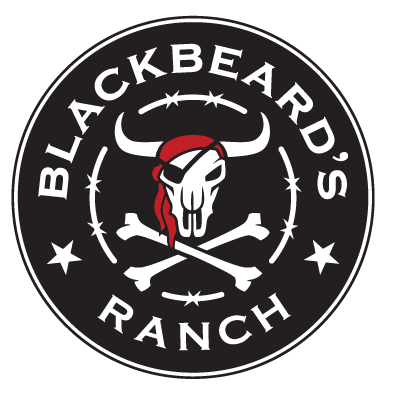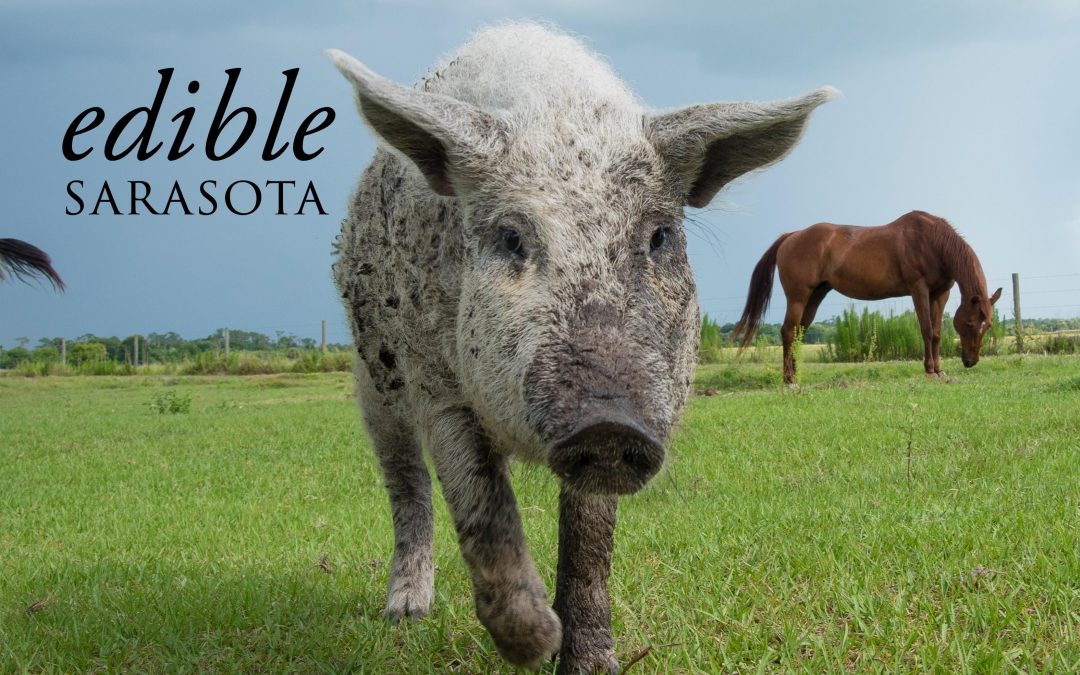Blackbeard’s Ranch models sustainable Florida
A sixth-generation Florida cattle rancher. An environmentalist and conservation scientist. A successful island restaurateur. Three people from vastly divergent walks of life have come together to build the groundbreaking story of Blackbeard’s Ranch, a fully diversified cattle ranch that may hold keys to saving natural Florida and healing the environment.
The Conservation Cowboy
Jim Strickland grew up immersed in natural, wild Florida. When he wasn’t roaming the flatwoods and dry prairie that comprised his family’s cattle ranch, he camped with his Boy Scout troop in Myakka River State Park or on Egmont Key. He came to love the land deeply as a youth, and when his father suddenly passed away, the stewardship of that land passed down to him at age 17 as he inherited operations of the family ranch.
Four and a half decades later, Strickland oversees approximately 18,000 acres of ranchland across four Florida counties, and his love for the state runs deeper than ever.
“I think Florida’s very special with all of its dynamics,” Strickland says. “I always say it’s one of the sexiest states in the union, because we have Miami and Tampa, we have Lake Okeechobee and the Everglades, we have Orlando and Disney World. I think those are all components of a great state.”
But as approximately 1,000 people move to Florida every day to take advantage of Florida’s attractive components, ranchers like Strickland—essential to Florida’s hardworking agricultural economic engine—feel heavy pressure to carve off portions of their land and sell them to developers.
Strickland is adamant about this: “I am not anti-growth. I am not anti-housing. I am not against all those things that make Florida special,” he says. “But among those things are, of course, green space, good water, and quality of life.”
An Environmentalist Sees Opportunity
The American beef industry doesn’t tend to conjure up environmentally friendly associations in the popular conscious. But when it comes to Florida cattle ranches, Julie Morris says common perception gets it all wrong.
“In certain parts of Florida where there are natural grassland and savannah-type systems, ranching is a pretty low-intensity land use,” Morris says. “Ranching does a really good job of mimicking natural native habitats, and a lot of this pasture still supports many of Florida’s endemic species, such as crested caracara or burrowing owls.”
As the National Wildlife Refuge Association’s conservation program manager for Florida and the Gulf Coast, it’s Morris’ job to find creative solutions to preserving those habitats. Among Florida’s cattle ranchers, she discovered ideal partners to help advance her mission—beyond ideal, as ranchlands benefit the environment in even more ways. Landscape protection via controlled burns eliminates invasive species that wreak havoc on native ones. Not only does ranchland sustain abundant life, it also holds incredible powers to retain, filter, and return clean water to Florida’s watersheds.
“If we’re going to have viable panther populations north of the Caloosahatchee River, we have to protect these private ranches,” Morris says. “And if we’re going to have clean water in the Myakka River and Charlotte Harbor, we’re going to have to protect these landscapes.”
“Land rich, cash poor”—that phrase essentially defines the Florida rancher. To help these potential conservation champions stave off pressures to sell their land for development, in 2014 Morris and Strickland teamed up with other landowners, ranchers, and ecologists to form the Florida Conservation Group (FCG). One of the many ways the FCG advocates for ranchers is to navigate the complex and competitive process of obtaining conservation easements, under which federal or state governments permanently dedicate lands for natural preservation through the purchase of a landowner’s development rights.
Blackbeard’s Ranch, an approximately 4,500-acre expanse of Myakka Prairie hugging the northeast corner of Myakka River State Park, became a frontrunner with its own conservation easement, facilitated by Morris’ expertise and fueled by the mission of the FCG. Though the advocacy nonprofit focuses on land conservation, ranch viability undergirds all their conservation efforts. Florida’s water quality and endangered species depend on ranchlands to survive—but the FCG fully recognizes that ranchers, their families, and employees depend on them for survival, too.
As Strickland and Morris took a ride through Blackbeard’s Ranch one afternoon, their conversation about the cattle ranch’s future took an unexpected turn as Morris hit on another creative solution to help the cow-calf operation thrive.
She asked, “Have you looked at Mangalitsa pigs?”
The Restaurant Connection
Sean Murphy—proprietor of Anna Maria Island’s renowned Beach Bistro, beloved gastropub Eat Here, and craft cocktail bar The Doctor’s Office—had a pork problem.
“My job is for me to get the best possible product that I can find,” Murphy says. “I never stop searching.”
In his quest to locate the world’s best pork, Murphy caught wind of the Mangalitsa, a shaggy European pig whose meat is mythical for exceptional flavor and nutritional value. Murphy strove for years to find a reliable, quality source of Mangalitsa pork for his restaurants and had given up altogether—until last winter.
Murphy describes a scene like something out of an old Western flick:
“I’m wandering out of my bar, and there’s a great big guy with a big white hat sitting at the end of the bar. He said, ‘I’m looking for Sean Murphy.’ I had visions of Wyatt Earp and the O.K. Corral.”
The man in the big white hat was none other than Strickland.
“He said, ‘Well, I have the world’s best pork,’ and without any further prompting I asked, ‘You have Mangalitsa pigs?’” Murphy recalls. “And Jim says, ‘I sure do.’”
And just like that, Murphy found a purveyor of his dream product, and Blackbeard’s Ranch brought its first diversified product to market. The chefs at Beach Bistro and Eat Here fell in love with the entire Mangalitsa, starting with pork belly, pork chop, and pork loin dishes. Experimentation continues with a “big pig” burger and even pork cracklings for a bar snack at The Doctor’s Office. Murphy now sources ribeye from Strickland’s cattle, and hopes to explore chicken products as Blackbeard’s Ranch develops a new heritage fowl program.
With procuring world-class products as Murphy’s top priority, discovering those products practically in his backyard is a bonus. The conservation mission at Blackbeard’s Ranch offers another:
“I may live on an island,” Murphy says, “but I believe in the mission of ranchers like Jim to keep the interior of our state as pastureland and as close as possible to its natural state. As someone who has to worry about red tide, it’s a very good thing.”

